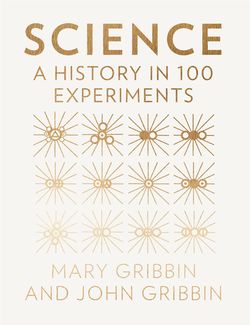Читать книгу Science: A History in 100 Experiments - John Gribbin - Страница 26
Оглавление| No. 21 | WEIGHING THE EARTH |
The experiment usually described as ‘weighing the Earth’ was first carried out at the end of the 1790s, and reported to the Royal Society in 1798. But in fact this experiment was the first determination of the strength of the force of gravity, which turns out to be the weakest of the forces of nature. The experiment was devised by John Michell, who had been a Cambridge professor but gave up his post in 1764 to become a parish priest, although he continued to study science in his spare time.
Michell was the first person to come up with the idea of black holes, in 1783. By then, it was well known that the speed of light is finite (see here), and Newton’s law of gravity showed that the more massive an object is, the faster you have to move to escape from it. Michell calculated that an object with the same density as the Sun but 500 times the diameter of the Sun would be so massive that this ‘escape velocity’ would exceed the speed of light. He wrote that ‘we could have no information from sight’ of such an object. It would be, in modern language, a black hole.
He was also interested in more down-to-earth studies of gravity. As well as thinking up an experiment to measure the strength of gravity, Michell got as far as building most of the apparatus needed for the experiment. But he died in 1793, before the experiment could be carried out. All his scientific equipment was left to his old Cambridge College, Queens, but nobody there was up to the task of doing the experiment, so the equipment was passed on to Henry Cavendish, in London, one of the most careful and successful experimenters of his time. Cavendish was a wealthy aristocrat and recluse, who had the money and inclination to devote all his time to the study of science. So the measurement of the strength of gravity became known as the ‘Cavendish experiment’, even though it was devised by Michell.
The experiment is very easy to understand, but painstakingly difficult to carry out. It was constructed in an outbuilding at Cavendish’s house on Clapham Common, then still a village on the outskirts of London. The centrepiece of his experiment was a strong light rod, six feet (1.8 metres) long and made of wood, with a small lead ball on each end. Each of the small balls weighed 1.61 pounds (730 grams). The rod was suspended by a wire from its exact centre, so that it was in balance. Two much heavier lead balls, each weighing 348 pounds (157.85 kilograms), were mounted on swivels so that they could be swung into position at a very precisely measured distance (9 inches, or 22.86 centimetres) from the small balls, each of which had already been weighed very accurately. All of this experimental equipment was placed inside a wooden case so that no air currents could disturb it. Because of the gravitational attraction between the large balls and the small balls, the horizontal bar would try to twist, until it was stopped by the torsion of the wire. By carrying out a long series of experiments, some with no heavy weights and the horizontal bar twisting to and fro like a horizontal pendulum, Cavendish was actually able to measure the force of attraction between each of the small lead balls and a 350 pound weight (158.76 kilograms). This force is about the same as the weight of a single grain of sand. But he also knew the strength of the force of gravity acting between each of the small balls and the Earth itself – this is just the weight of each ball. So from the ratio of these two forces he could work out the mass of the Earth. It is even more impressive that Cavendish completed these experiments not long before his sixty-seventh birthday.
© Dorling Kindersley/UIG/Science Photo Library
Model of the gravity experiment apparatus used by Henry Cavendish,
In fact, Cavendish did not give a figure for the mass of the Earth, but quoted a number for its density, which is the mass divided by the volume. On 21 June 1798 he reported to the Royal Society the combined results of a series of eight experiments carried out in August and September 1797, plus nine more carried out in April and May 1798. The figure he reported was 5.48 times the density of water. But he had actually made a slight arithmetical error, and the true density based on his measurements is 5.45 times the density of water. This is very close to the best modern value, which is 5.52 times the density of water. Cavendish was out by just over 1 per cent. And although Cavendish did not do the further calculation himself, such experiments can be used to work out the so-called gravitational constant, G, which is a measure of the strength of gravity.
